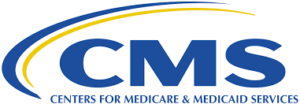In a formal guidance letter to state Medicaid directors, the Centers for Medicare & Medicaid Services has outlined ten ways that states can better serve individuals who are enrolled in both Medicare and Medicaid.

This letter describes ten opportunities – none of which require complex demonstrations or Medicare waivers – to better serve individuals dually eligible for Medicare and Medicaid, including through new developments in managed care, using Medicare data to inform care coordination and program integrity initiatives, and reducing administrative burden for dually eligible individuals and the providers who serve them. A number of these opportunities are newly available to states through Medicare rulemaking or other CMS burden reduction efforts. We are happy to engage with you and your staff on one, many, or all of the items described in this letter. The CMS Medicare-Medicaid Coordination Office (MMCO) works across CMS and with states to better serve dually eligible individuals, including through efforts to better align the Medicare and Medicaid programs and demonstrations to test new approaches to integrated service delivery and financing.
Those ten ways are:
- state contracting with dual eligible special needs plans (D-SNPs)
- default enrollment into a D-SNP
- passive enrollment to preserve continuity of integrated care
- integrating care through the Program of All-inclusive Care (PACE)
- reducing the administrative burden in accessing Medicare data for use in care coordination
- program integrity opportunities
- Medicare Modernization Act of 2003 file timing
- state buy-in file data exchange
- improving Medicare Part A buy-in
- opportunities to simplify eligible and enrollment
Private safety-net hospitals serve especially large numbers of dually eligible, Medicare-Medicaid patients and will be interested to see whether CMS’s recommendations translate into action at the state level.
To see the entire letter, including additional information about these ten opportunities, go here.

